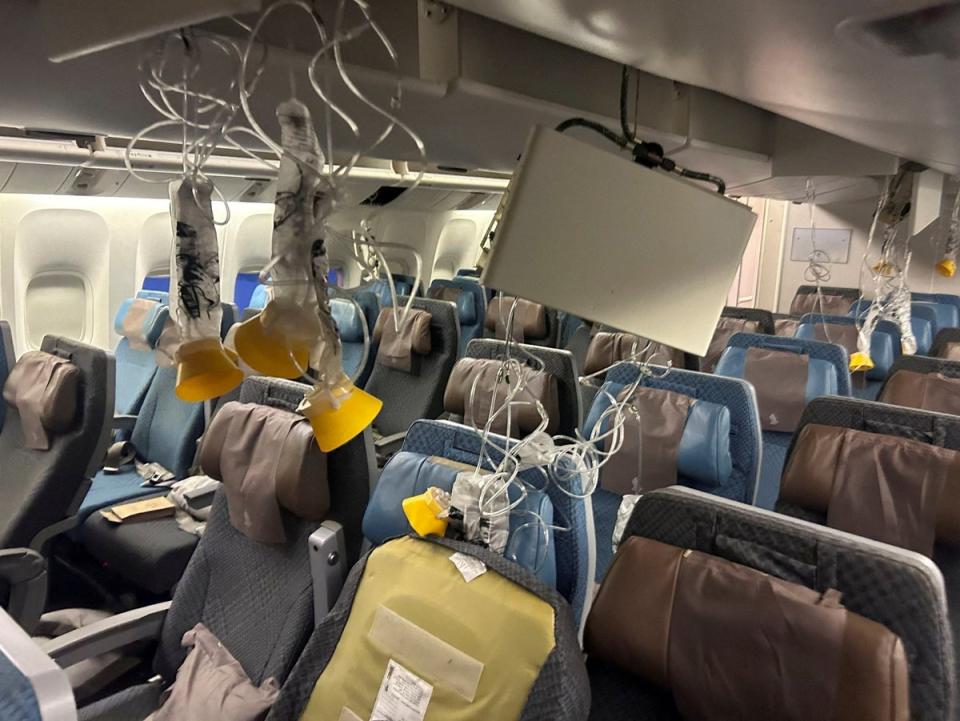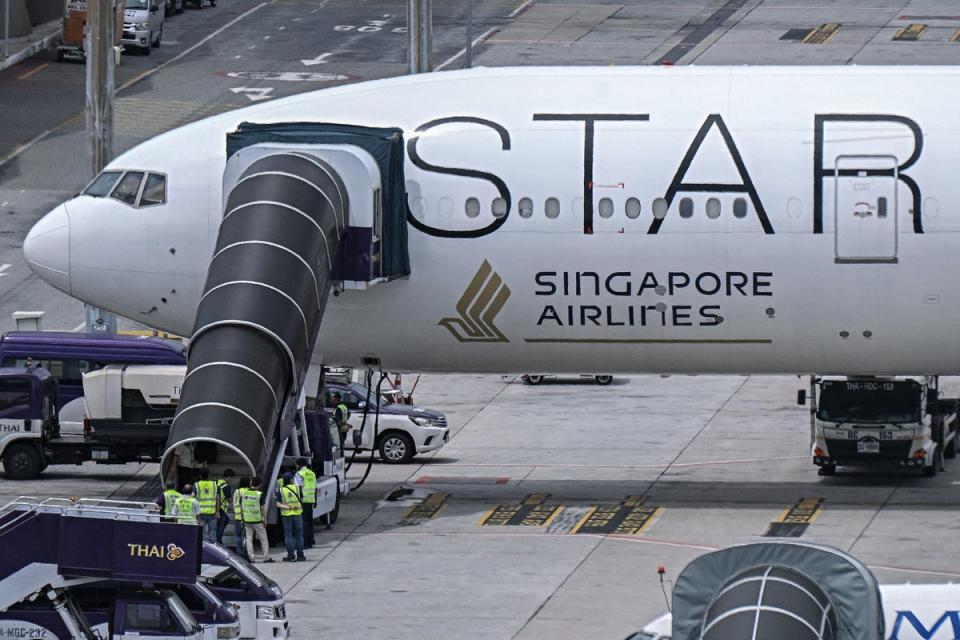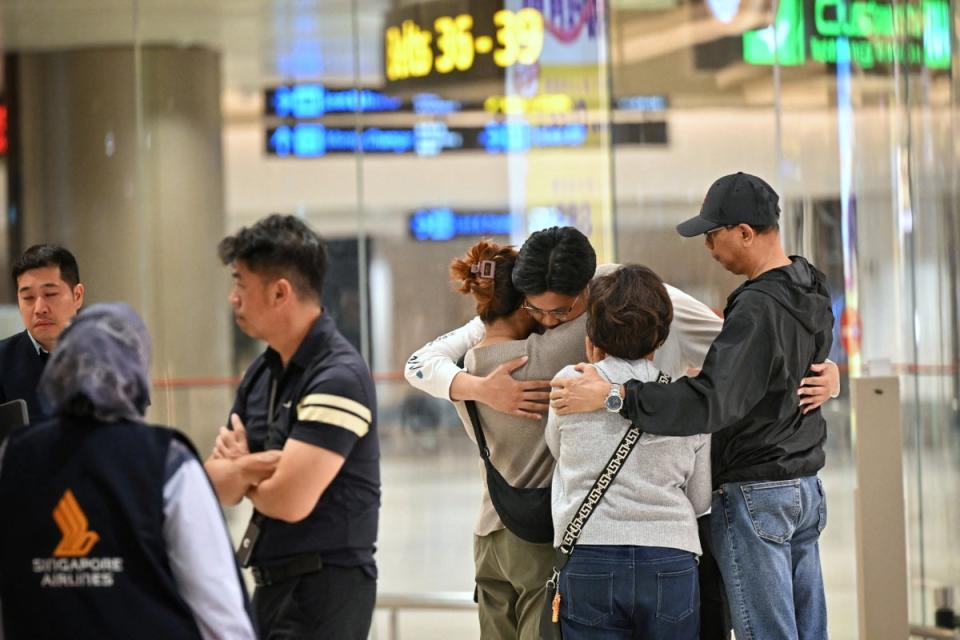How the climate crisis is making turbulence worse and flying more dangerous
The death of a 73-year-old British man on a Singapore Airlines flight has again raised concerns about how climate change is increasing instances of flight turbulence.
Geoffrey Kitchen was among 211 passengers onboard the Boeing flight from London to Singapore when was hit by turbulence amid extreme weather.
Mr Kitchen was killed, while around 70 others were injured, after what passengers described a “dramatic drop” with some people’s heads slammed into the ceiling above their seats.

On Wednesday, as air safety officials started their investigation into what happened, attention has focused on the role of climate change with a growing number of studies indicating erratic air circulation patterns are being aggravated by the change in the earth’s temperatures.
It follows a number of other incidents including a Spicejet flight from Kolkata to Mumbai that was hit by severe turbulence in May 2022, injuring 14 passengers.
In March 2019, a Turkish Airlines flight from Istanbul to New York was also buffeted by severe turbulence over Maine, injuring 30 people, including a flight attendant who suffered a broken leg.
“Climate change is going to have many effects on aviation. We expect the atmosphere to become more turbulent. So there could be possibly twice or three times as much turbulence on flights in the next few decades,” Paul Williams, professor of atmospheric science at the University of Reading, previously told The Independent.

Severe turbulence is caused by an erratic wind current occurring in cloudless regions of the sky at the cruising altitude of passenger jets. It is generated by wind shear, which is a change in the direction and velocity of winds that can displace aircraft abruptly from their intended path.
Emerging evidence suggests the temperature changes caused by the climate crisis are disrupting the flow of air currents in the atmosphere due to changes in wind speed and direction.
“We know that the jet stream at flight cruising altitudes has become 15 per cent more sheared over the North Atlantic since satellites began observing it in the 1970s,” Dr Williams said.

A 2017 study published in the journal Advances in Atmospheric Sciences, looked at the impact of stronger wind shear – an abrupt change in wind speed or direction over a short distance that is a major cause of turbulence – on winter-time transatlantic flights.
It found that the doubling of global CO2 levels will increase the average amount of severe CAT at 39,000ft by 149 per cent, meaning airline passengers will have a bumpier ride in the future if emissions continue unabated.
It is not only through air current disturbances that the climate crisis is impacting passenger safety, scientists have warned, but also due to extreme weather events like storms and tropical cyclones – which are proven to be more common and more powerful due to global warming.

As the seas get warmer, it is expected that there will be stronger cyclones and hurricanes, says Dr AchuthaRao, head of the Centre for Atmospheric Sciences at the Indian Institute of Technology.
“When you have general global warming, warmer air can hold more moisture, so when it condenses, it is going to lead to more rainfall. So even routine rains may get heavier, and when you have larger rain amounts near coastal area airports, the drainage of water becomes an issue,” the professor said.
In addition to this, flight take-offs and landings will be increasingly affected by heat waves, especially at airports with short runways. New studies have found surface air temperature has increased all over Asia over the last century, causing stronger, more frequent and longer heatwaves.
“For every 3C rise in air temperature, air density reduces by 1 per cent which means the lift generated by aircrafts could also decrease by 1 per cent,” Dr Williams said.
“This may not have a large impact on most aircraft much below their takeoff weight, but if the aircraft is heavy with lots of passengers, cargo and full of fuel, such warming can prevent it from taking off.”


